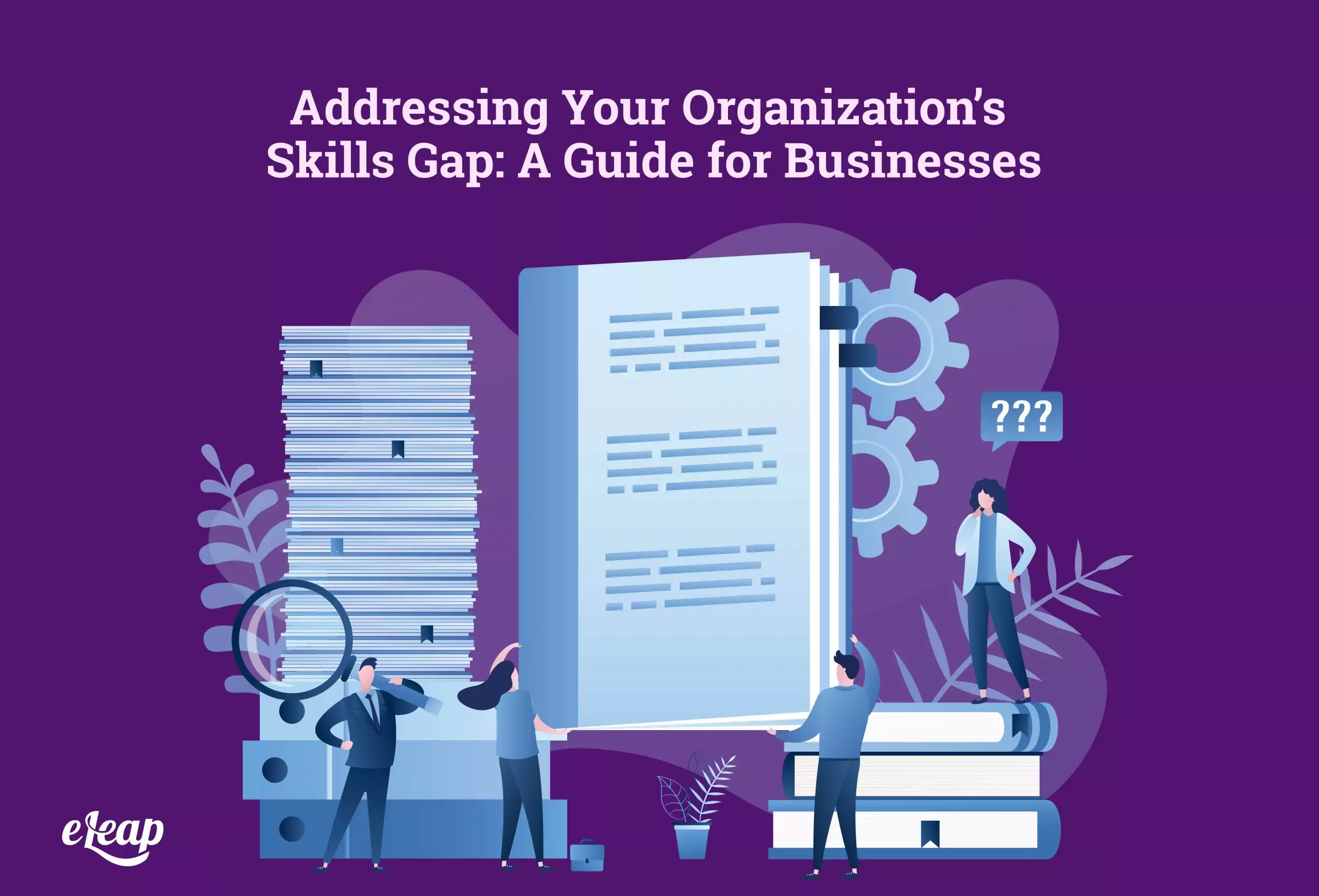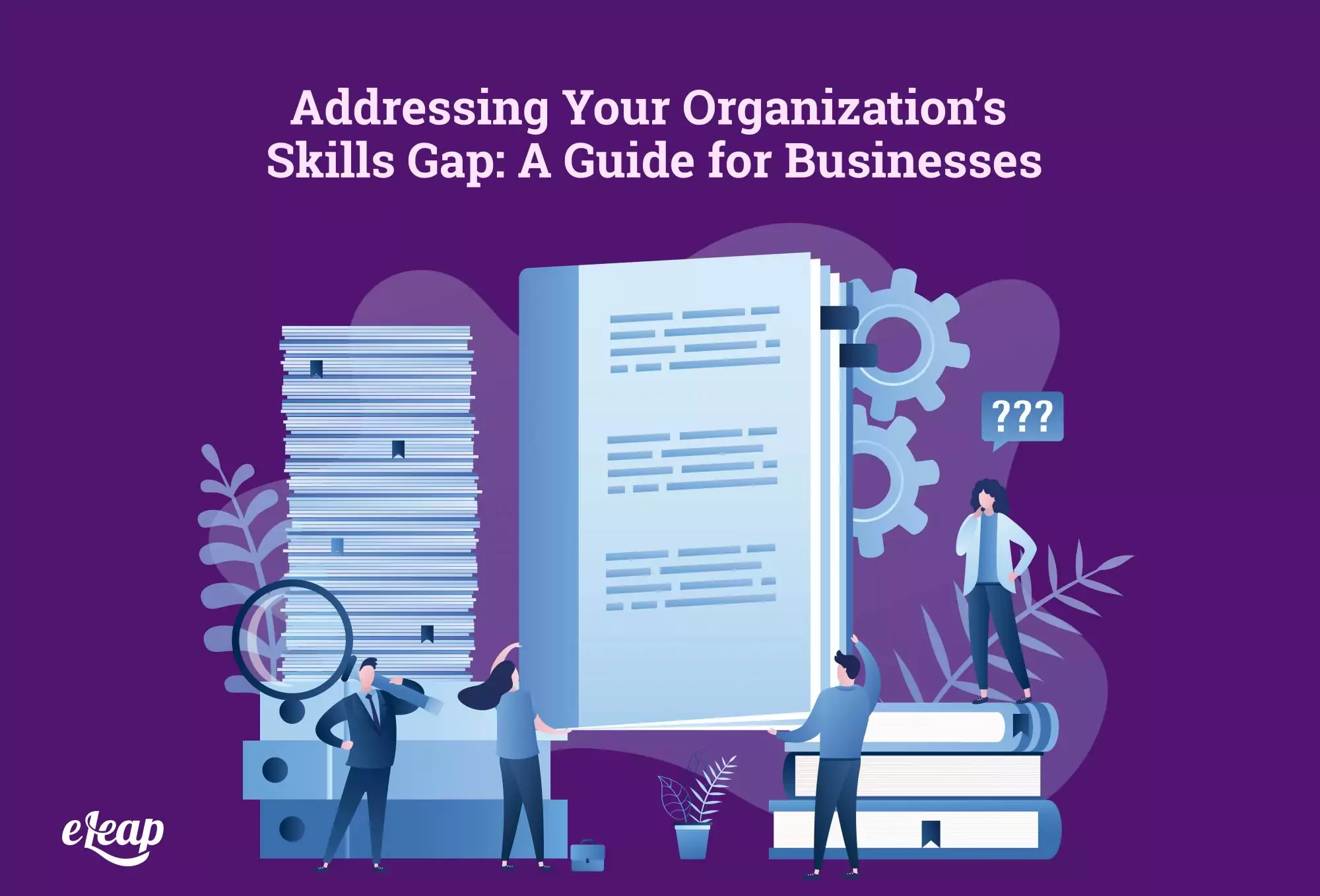Addressing Your Organization’s Skills Gap: A Guide for Businesses

The term “skills gap” has become something of a catchphrase today. However, that does not rob it of its meaning or value. Many industries are seeing a shortfall of critical skills necessary for business processes and success, and are facing organization’s skills gap. There is a very good chance that your business falls within that group.

Closing the skills gap can be a very challenging proposition for organizations, and will require a multifaceted approach. It requires more than simply requiring your team members to complete basic training through your LMS. While the modern learning management system is a requirement, understand that this is not a problem that a platform can solve on its own.
In this article, we will provide a guide to help inform your training development. The goal is to ensure that you can close your organization’s skills gap and any that may develop in the future.
Assess Your Gaps
As with most training, closing the organization’s skills gap will require that you monitor and track employee progress through training and development. However, you must know where you’re tracking to and from – where are employees going? Where should they be when they finish the training? To answer those questions, you will need to assess your gaps and identify which specific ones are present.
What If I Don’t Know What I Need?
For some businesses, identifying skills gaps is as simple as defining what skills are not present, currently. However, what if you don’t know what skills you need? This is not uncommon, particularly if you are attempting to build in a business process that you do not currently offer in-house. Simply put, if you do not know what skills you need, you cannot assess your organization’s skills gap.
In these instances, you will need to do a bit more legwork to get started. Begin with the final process, service, or objective. What is it that you want to achieve? Is it better customer service? Is it a new business process that enables better outcomes for your teams? Once you have identified what you want to do, work backward by asking questions such as:
- What skills are required to achieve this outcome or complete this process?
- What knowledge is necessary to achieve those skills?
- Is there a prerequisite level of skills or knowledge that must be built on sequentially?
By working your way backward, you create an accurate image of the chain of skills and knowledge necessary to get from where you are now to where you want to be. For instance, if your ultimate goal is better customer service, you might identify the following sequence (listed in reverse order of achievement):
- Active listening
- Empathy
- Communication skills
- Familiarity with technology (phone system, CRM, etc.)
From this example, your employees would begin developing familiarity with your technology stack, then move on to developing communication skills, which would enable better empathy, and that would enable them to build active listening skills, eventually culminating in improved customer service.
Once you have established the skills you need, it is time to move on to the next step. Your learning management system (LMS) will play a role here, but there are other steps you can take, too.
Mapping Skills to Employees
When you know what skills are necessary to achieve your desired outcomes, the next step is to identify any in-house talent that you have available. Promoting skilled existing workers is more cost-effective than hiring a new employee, and it also breeds greater employee loyalty, satisfaction, and engagement, all things that today’s employers need to achieve success.
Your learning management system will be a critical tool here. If it has been properly administered, you should have access to important information about the skills, capabilities, and aptitudes of your existing staff members. It should be possible to search records using keywords and phrases to surface talent that you already have available.
However, note that just because someone has a particular skill or ability, that does not necessarily mean that they are a good fit for the position. Take care when filling open positions and promoting employees. Move team members with an eye toward more than just a good skills fit – they need the right personality and career goals to be successful. (download free Employee Development eBook)
What If I Have No In-House Talent?
If you’ve scoured your LMS for relevant skills and are coming up empty, it is time to cast a wider net. You will need to hire outside the organization to close those skills gaps. Doing this successfully will require:
- Well-developed job descriptions
- An idea of what the ideal candidate might look like
Overlooked Talent Pools
Make sure that you consider nontraditional, diverse talent pools that might be less than obvious. For instance, older workers are often untapped wells of value and have skills that you might not be aware of. In addition to skills, they also bring years of experience and expertise that enable them to deliver substantial results. If you lack sufficient older workers in-house, you can look farther afield and hire them.
Another overlooked talent pool, those with disabilities, can provide employers with proven higher revenue and improved loyalty. In addition, disabled individuals often excel at customer service and outreach (common business goals and priorities). Veterans are also often overlooked as a potential talent pool, as are foreign-born workers and even formerly incarcerated individuals.
Your LMS: The Most Potent Tool
Whether you’re upskilling existing team members or hiring from outside the company, your learning management system will be critical to closing organization’s skills gaps. It can help you assess knowledge and skills, give you access to current skills information, track development over time, and so much more. however, you only get these capabilities with a modern learning management system. At eLeap, our cloud-based platform ensures agility and flexibility while providing access to everything from industry-leading skills development content to granular tracking and reporting capabilities. Contact us today for more information about using our LMS to help close your skills gaps.